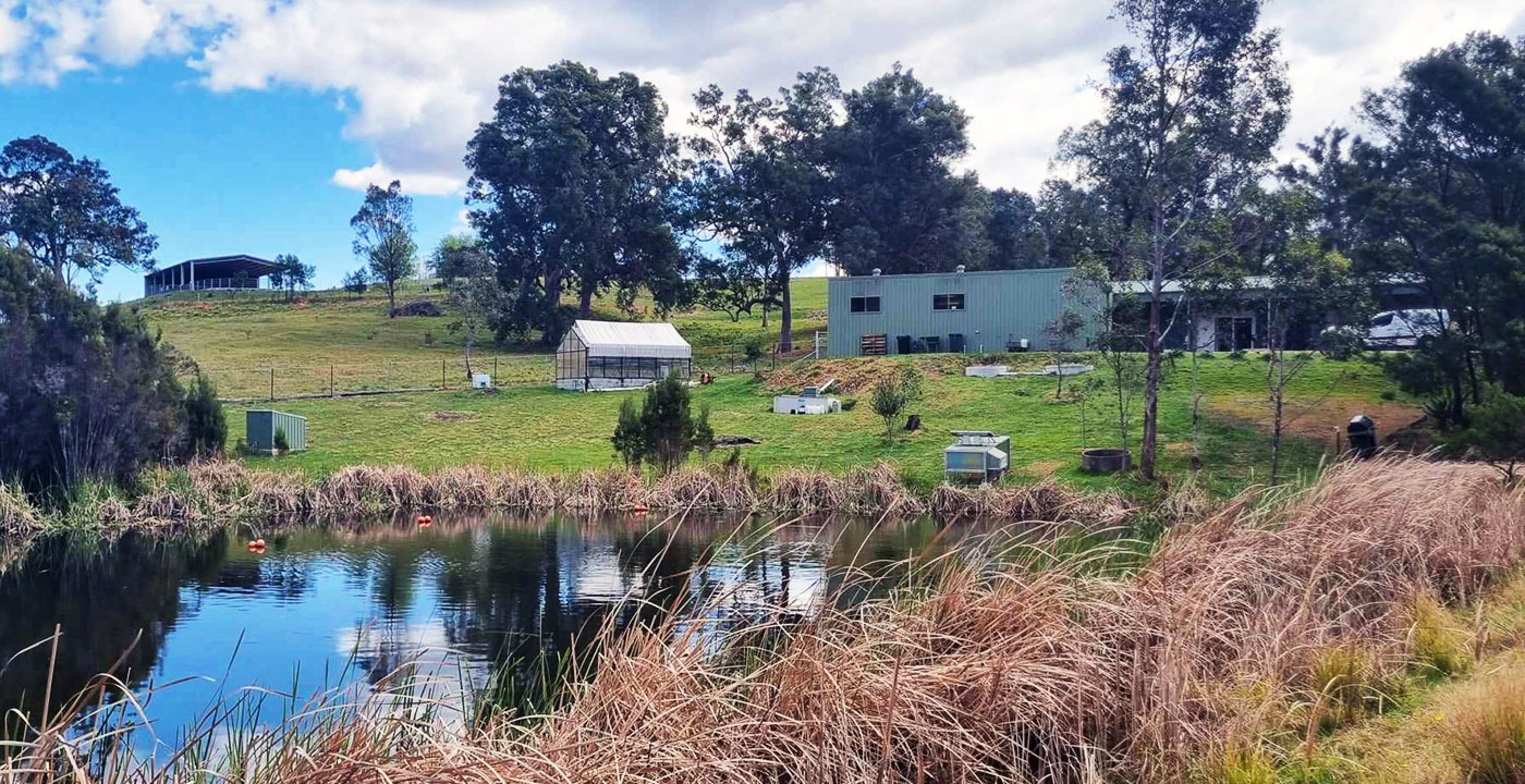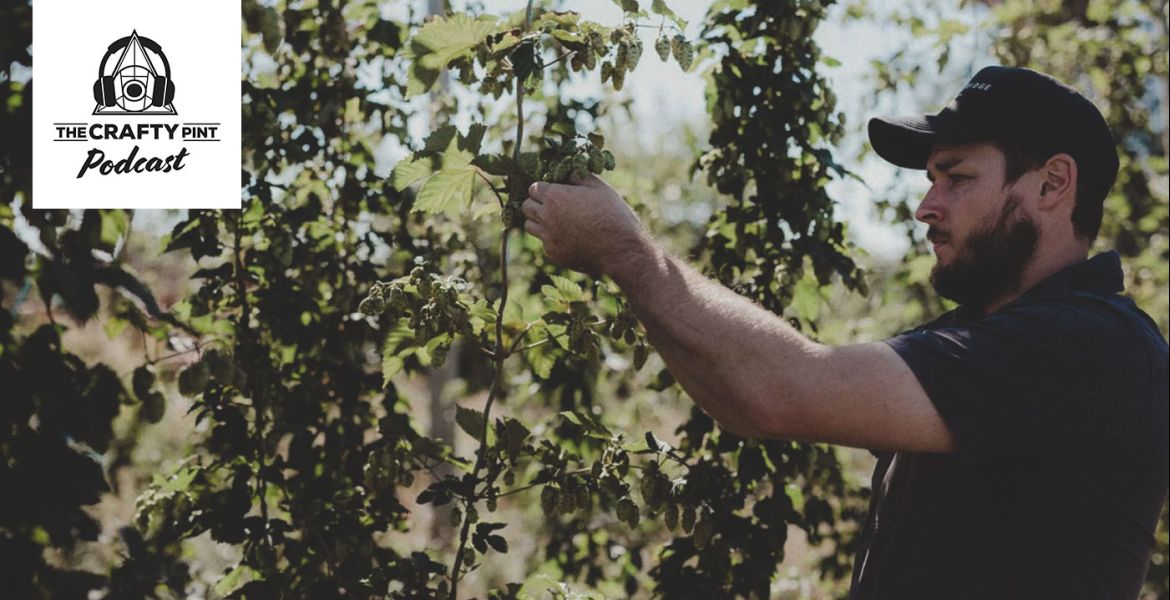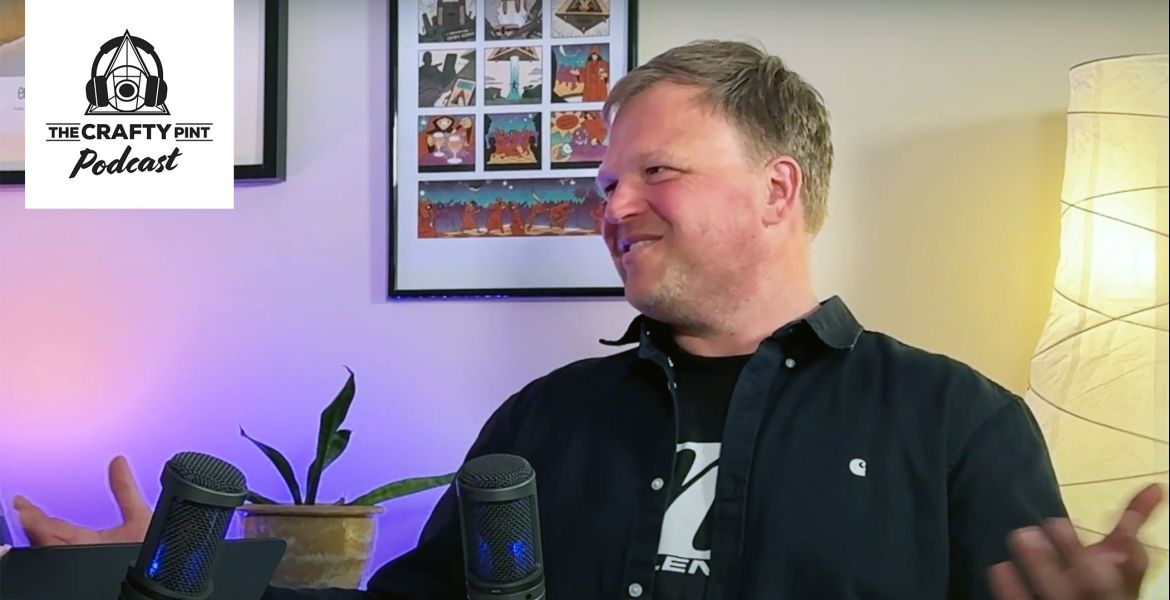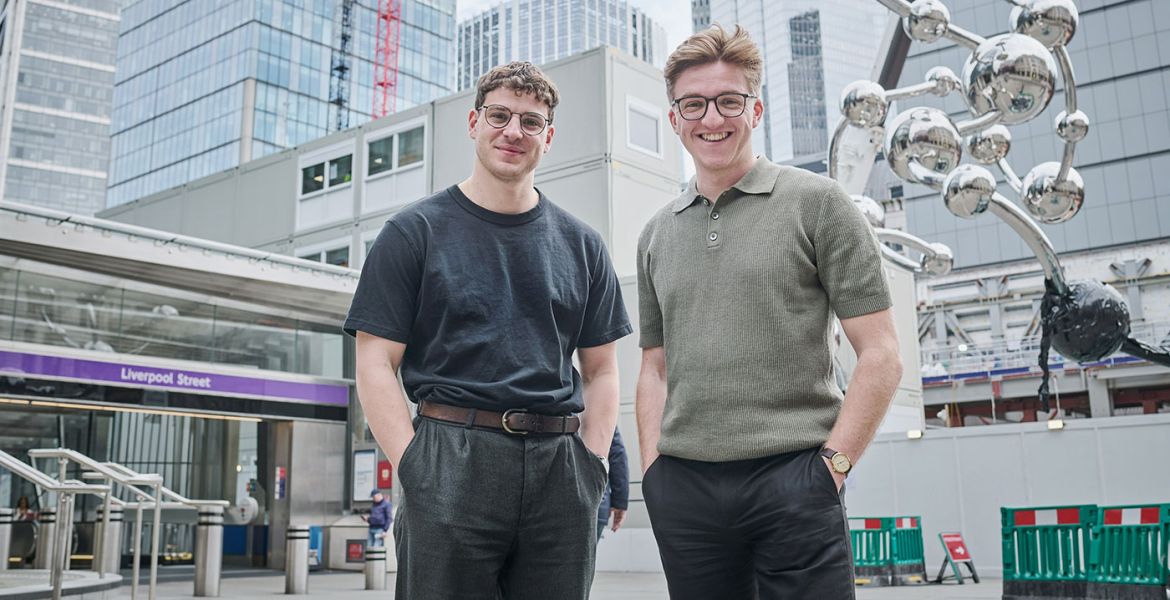Frogs are the sign of a healthy ecosystem. In order for frogs to thrive, conditions need to be pristine. Air must be crisp and clean, the soil free of chemicals, the water flowing unpolluted. Although that frog in the pond outside my bedroom delays my sleep some nights, with every croak he reminds me I’m resting in a healthy environment.
After a night of being sung to sleep by frogs, I head just a little south of Bega, in the once more green and thriving Sapphire Coast of NSW, into the locality named for our amphibious allies, Frogs Hollow. According to the 65-word Wikipedia entry, Frogs Hollow is home to an airfield, motorhome converters, and a go-kart track. Unfortunately for Sapphire Coast Kart Club Track, they may no longer be the most talked-about business in the tiny town now that Frogs Hollow Brewing Co are open.
Owners Richard Northam and Mitchell Piercey met through mutual friends in the latter’s native Canada in 2007. A few years later, they bought a parcel of land in Frogs Hollow, home to ‘roos, dams and yawning hills. Like so many breweries on the South Coast, COVID was a catalyst for turning brewing dreams into a reality; in December 2021, the life partners officially became business partners as they launched the first off-grid brewery in NSW.
With a background in marketing and events, Mitchell heads up marketing and distribution at Frogs Hollow, which helps explain why the can art is so schmick and why every bottleshop manager I spoke to absolutely loves working with this smiling and easygoing Canuck. They also love the beers, brewed by Richard, a former electrical engineer who describes himself as “always tinkering”, a trait evident throughout the property from the solar panel on the chicken coop to the canning machine he built himself.

“It was so expensive to buy one,” Richard told me as we sat next to the tanks containing the next batch of off-grid beer.
In a sense, Richard’s custom canning machine sums up a lot of the choices made at Frogs Hollow. Business challenges are answered using environmentally friendly and cost effective solutions.
“When we bought the property we couldn't easily get services onto the property,” he says. “We knew from the get-go we had to find a way to make this work in an off-grid way, and when you start to peel off the layers on what it means it means being kind to the environment.”
“Also made economic sense,” Mitchell adds. “We don’t pay electricity bills, which means we can offer our products at a certain price point. We haven't raised our prices for some customers since we started. Input costs are a lot less.
“We also own the property outright as well so we don’t pay any rent. Our costs are ingredients, time and packaging.”
Good for the environment and cheap? As someone who knows more about beer tasting than beer brewing, I initially couldn’t understand why every brewery doesn’t simply give AGL the finger and go off grid. Ever seen that triangle of “Fast, Cheap & Good; pick any two”? To brew beers worth drinking, such as the refreshing Mitchies Jetty Session Ale or the comforting Snowys Winter Ale takes longer to do so when you’re brewing off-grid.
“We’re chilling down a max of two vessels at a time,” Mitchell says.
“We have to be very strategic because if we’re chilling down too many at once the generator will have to come on. Some breweries when they’re chilling down, they’ll set it to minus one and go home for the night. We’ll start chilling in the morning, starting at 6am and have to keep an eye on it the whole time.”

Although diesel power is currently used for the hour of the boil, solar panels and batteries power everything else at Frogs Hollow, with the goal of the brewery eventually being 100 percent solar powered.
According to Richard, the average Frogs Hollow beer takes 21 days to brew with some requiring as long as 30 days. However, it’s not just about being sustainable: the beer still has to taste good. If Richard is unsatisfied with the brew (the chronic tinkerer likes to check the gravity during the mash and the run-off to the kettle every five to ten minutes) then they won’t sell it.
Of course, this doesn’t mean the beer goes to waste. Any brews that don’t pass muster become food for the plants, an inadvertent treat for the local ducks and roos or, in the case of one batch, a barrel-aged spirit with a little help from North of Eden Distillery.
In just the short time they have been open, Frogs Hollow Brewing Co have become part of the symbiotic South Coast circular economy that very much feels like an ethically capitalist extension of the natural environment where nothing goes to waste.
“Spent grain goes to a local farmer that picks it up and feeds it to his pigs and his lambs. We got half a pig back, so we’re happy with the arrangement.”

It seems as if every by-product is given a second life here. The mash tun and yeast dumps go into the compost, which is then used around the property. Grain bags are given to neighbours who use them for gardening and rubbish collection. My personal favourite reuse comes once again via North of Eden Distillery: they collect the vodka used to soak the cacao nibs (for stout and winter ale) and use it as the base for their chocolate vodka.
However, I’m underselling Richard and Mitchell’s efforts if you walk away from this thinking they are just a part of their community. Personally, I think the pair are on their way to becoming leaders in the field of sustainable brewing as they are currently looking for affordable and environmentally-conscious management solutions for that most precious resource: water.
“Typically a brewery will haver five to six litres of water they use for each litre of beer,” Richard says. “We try to get that down to two to 2.5. That does mean a little bit of manual cleaning.”
“Many breweries will dump the trub out and then do a clean of the fermenter using their CIP (Clean in Place) cart,” Mitchell adds. “We go to the effort of diverting as much of the yeast and trub during the process so that we can use it for composting, rather than putting it down the drain and into the holding tank.
“It does mean a lot more manual intervention, and manual cleaning which is a price we are more than happy to pay if it helps our impact on the environment.”
Richard again: “It’s more labour intensive but it means our water usage is much less. At some point we are going to get a drought so we need to be efficient.”

All of the water used for brewing Frogs Hollow beer is tank water, collected from rainfall and stored in their 310,000 litre water storage system, a policy that Richard says means they start brewing “with a blank palette.”
“There's no reverse osmosis, we don’t have to adjust the chemical impurities,” he adds. “When we dose water with salts, I’ll do it in a certain way to emphasise maltiness or hops and it will be different for every time.
“It’s easier for us because we start with a blank cheque, we’re not fighting the water. Reverse osmosis gives you clean water but you get an extremely concentrated, by-product of water that in the city you would put down the drain.”
Their reliance on tank water challenged Richard and Mitchell to use less water while brewing but reinforced their appreciation for this vital and precious resource throughout all of the brewing process. This includes innovative and eco-friendly treatments for the wastewater generated from brewing and cleaning.
“[Our waste] water goes into a holding trough outside.” Mitchell says. “We let it settle for 24 hours when we do a pH test and we add either acid or a base to it to bring it to a pH that we want then we irrigate it on the field.”
Before speaking to Richard and Mitchell, I wasn’t aware that rainwater typically has a pH between 5 and 5.4 (7 is neutral) due to absorption of CO2 in the atmosphere. If their wastewater comes out with a high pH, they use the rainwater to bring it down to an ideal range for irrigation: between 5.5 and 7.5. To do so, the off-grid brewers have a solution that involves their by-products as well as some nifty soil science.
“It’s quite rare that we need to use a base because it’s too acidic,” Mitchell explains. “When we do, we currently use a caustic solution which is recovered from the cleaning process, which undergoes a neutralisation reaction with the acids. The by-products from this reaction are in the form of salts.
“The soil in the fields that we irrigate has been analysed, and we monitor and track the amount of salts that we are adding to the soil to ensure that the soil isn’t overloaded or suffering from an imbalance outside of the acceptable range. Our adoption of Enzybrew 10 in lieu of caustic will revolutionise this and make it much easier to manage.”

“Caustic is a nasty chemical,” Richard adds, holding the first tub of their recently acquired cleaning agent, Enzybrew 10. “Brewers in the UK, Europe and US are using [this] enzyme cleaner instead of using caustic, so we started a process to try to get that cleaner into the country.
“It started in October of last year; we had to get therapeutic goods approval. Advantage of Enzybrew 10 is, once we use it to clean, it goes into the holding tank and breaks down into organic compounds.”
Currently, they’re in the process of trying to get other brewers involved in importing the cleaner to lower the import costs and to get more Aussie brewers using it.
After an hour of chatting and being shown around the picturesque property, I couldn’t resist asking Richard and Mitchell the hard-hitting question that lovers of this off-grid brewery have been begging to have answered: when is the taproom coming?
“When it opens!” Mitchell says with a laugh. “We’re aiming for March. We’re in the process of talking to the council. We just had the disabled toilet put in.
“We’re about to get it signed off and go into the next stage, and then we learnt we had to pave the road in, so we’re just saving up the cash.”
Those hoping for the full on-grid brewery experience while off-grid might want to temper their expectations as Mitchell says the taproom will be for tastings and takeaways only, not for sitting in and having a couple of jars.
“People are welcome to bring a picnic though,” he says. “If it’s a nice day you can sit wherever you like.”
The thought of enjoying a picnic full of Sapphire Coast produce with a side of tap fresh beer among the gum green hills of Frogs Hollow seems like a pretty good deal to me, a sentiment shared by the ‘roos sniffing around for any failed brews.
By continuing to tinker with their off-grid brewing practices, Richard and Mitchell are ensuring this green slice of NSW, their business, and the ones that follow their example will stay healthy, thriving and a home to happy, hopping frogs.




















